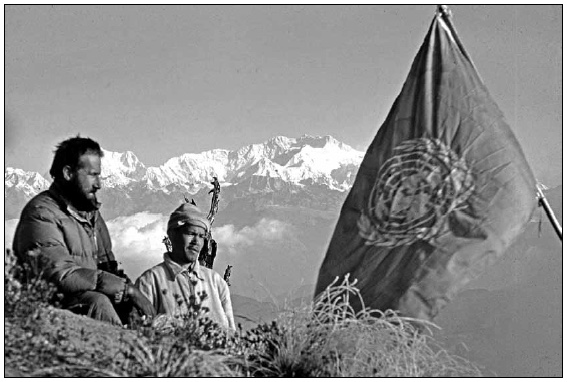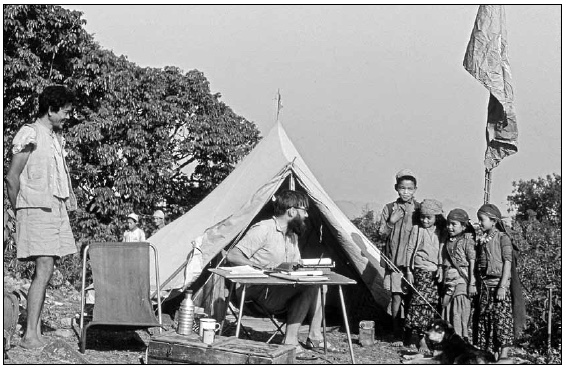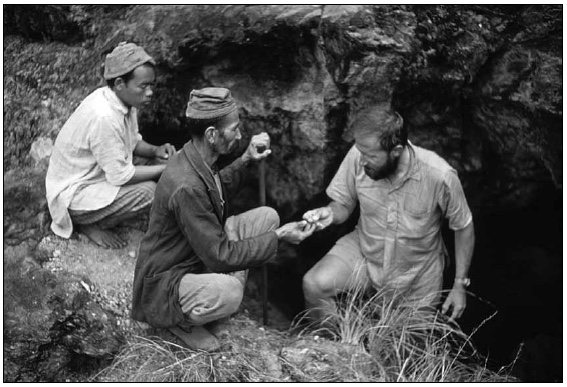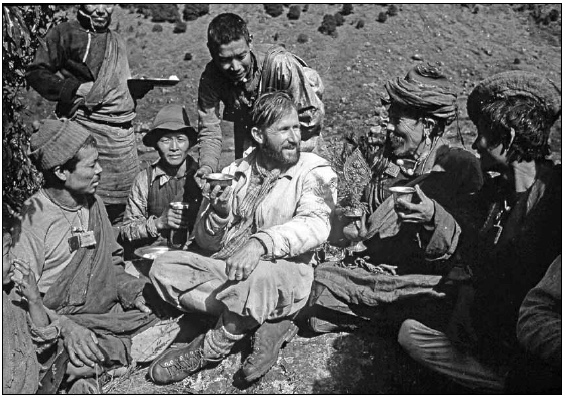Toni Hagen’s 100th birthday, a pioneer of development aid
Toni Hagen’s 100th birthday, a pioneer of development aid
A brilliant example of humanity
by Heini Hofmann
Everyone knows him in far-away Nepal, he must be called to mind in his native Switzerland. Toni Hagen was an engineering geologist and a highly successful but non-compliant aid worker around the world. His palmares is immense. But in his lifetime he was misunderstood and rehabilitated only after his death.
Born in Lucerne on 17 August 1917, grown up in Frauenfeld, first resident in Rapperswil SG and then on Lenzerheide, died on 18 April 2003 in St. Moritz, in between world citizen as aid worker on all continents, but with special affinity to Nepal: These are the stations of Toni Hagen, scientist by profession, mentor of development aid by vocation and opreator on incentives for humanity.


A groundbreaking crucial experience
On his home made skis, together with his father, the young Toni Hagen got to know and to love the Swiss mountains. The lecture of a Dutch researcher in the Swiss Alpine Club (SAC) section Thurgau on the Himalayas in 1927 set the course. “When I’m tall, I’ll go there too”, said the ten-year-old on the way home. In addition to publications by Albert Heim, the Swiss figure geologist (and rescuer of the Swiss Mountain Dogs), the exciting expedition reports of the Swedish researcher and discoverer of the Transhimalaja, Sven Hedin, were also a hot topic. The path from the glow of the Alps to the tracklight of the eight-thousanders was predestined. After graduating as an engineer geologist at ETH Zurich, Toni Hagen promoted the geology of the Valais Alps. For a surveying office in Flums, he commissioned the NOK to carry out investigations for the Linth-Limmern power plant and then specialised in the field of aerial imagery (photogeology/-grammetry) at the Geodetic Institute of the ETH, which would later be a very important part of his work in Nepal.
14,000 kilometers of walking!
In 1950, his dream came true: as a member of the first Swiss-funded Swiss Development Assistance Mission under the patronage of the ETH, he traveled to Nepal, into the previous isolated Hindu-kingdom at the Himalaya. This “Swiss Forward Team” was the pilot test for development aid in the outer European regions. Thanks to his uncomplicated character and his impartiality towards other cultures and religions, he quickly gained access to the local people. His interest in the “ethnological hub of Asia” was so great that he learned the language of Nepali and, after the expiration of the mission, remained first on behalf of the government and subsequently as a UN delegate in the country.
In the course of his geological fieldwork, he managed, in the company of Sherpas, in this “country without roads”, a fabulous 14,000 kilometers on foot, wearing out forty pairs of shoes ... His wife Gertrude and the three children he got him to join from the village of roses, Rapperswil, into the rampant barren mountain area, however, had, in the absence of a school for foreigners, soon gone back again and found a new place to stay on Lenzerheide. Despite such a large-scale separation with mere letter contact, the family bands remained intact.
From geologist to aid worker
And how life goes: Suddenly, the geological pilote experiment became a lifelong commitment to humanity. His karma showed him the way to action. In 1959, after the annexation of Tibet by China, the unrest in Lhasa exiled the Dalai Lama and huge migratory flows to India and Nepal moved, Toni Hagen, now Chief Delegate of the ICRC, suddenly faced new challenges, which he did not follow according to official schemata, but as a practice-oriented realist and a self-centering lateral thinker.
His credo was not to degrade refugees as alms recipients in idleness-camps, but to give paid work to them as quickly as possible, thus strengthening their self-esteem.
He argued that the uprooted Tibetans found a new home in Nepal. And how! He found the Dalai Lama in exile, recorded a message addressed to his people on tape, and played it before the anxious expellee. Thus he was able to gain their confidence and channel the refugee streams. He convinced the king to give the homeless settlement area.
In order to put them on their own feet, he initiated a carpet industry that grew to more than 200,000 jobs and became an economic factor in Nepal. The cheese production of Yak milk, which he initiated, has also been successfully implemented.
His idea for pedestrian huts in the land of high mountains and deep valleys became one of the most successful development projects of Switzerland. And even for the Tibetan diaspora in his own homeland (with the first Tibetan monastery in Rikon in the Tösstal in Europe), he provided an enlightening spadework.


Gaining strength of resistance and criticism
Praise came from all over the world, but not from Switzerland. Here his independent activities did not come across well, his successes aroused envy. Various aid organisations reacted with criticism, which some media transported unreflectively – or he were silenced dead, as in the Swiss lexicon, where he was not even mentioned in the chapter Nepal under development aid (!). However, Hagen was not to be intimidated; on the contrary, resistance seemed to be a stimulus for him. And he could sarcastically let rip against “ignorant technocrats, narrow-minded ideologues and professional benefactors who fatten themselves.”
Such thick skin and fearlessness also helped him with his many heave-ho exercises, which he later carried out as trouble-shooter on behalf of the UN and other organisations as well as various country governments in crises around the world. For example, when, after the civil war in Yemen, he quickly cleared out a corrupt UNO mission, or, in former East Pakistan in the manner of James Bond, removed the ignition heads on all trucks, and sent them to Singapore via a seized speedboat, so that the army could not commandeer them.
Like father, like son
The “Swiss Lama” spent his old days in the Heidhüsli on Lenzerheide, where a carpet of the Nepalese Tibetan community hung with the inscription “Für Toni Hagen, seit 1950 der liebe alte Freund der Völker des Himalaja“ “For Toni Hagen, since 1950 the dear friend of the peoples of the Himalayas.” With the Dalai Lama and with Nepals King Birendra, a lasting personal friendship attached him. The Dalai Lama personally praised him in the closing words of the movie about his life (“The Ring of the Buddha”, 2002). Moreover, King Birendra, of whom he received, among other things, the highest honours of the country, the “Gurkha Order”, he revisited two years before his own death, not anticipating that an amok runner would murder him and his family a week after his departure. A sad event in Hagen’s second home.
In retrospect the honorable citizen of Nepal’s capital, Kathmandu, was allowed to be proud of his life’s work. His last success as one of the allies against the moloch-dam project Arun III, was, when the World Bank and Germany withdrew their commitment and created many small power plants. His first strong criticised opinion of development aid won through. At his death, the President of Helvetas wrote: “Strengthening local democratic structures and the participation of those directly affected by the directives were Toni Hagen’s credo of development cooperation. Today, they belong to the widely accepted basic principles.”
Moreover, it is beautiful how circle of this story is completed: the father’s Nepal virus also sprang over to his daughter Katrin Hagen in the Engadine, president of the Toni Hagen Foundation (<link http: www.tonihagen-stiftung.ch>www.tonihagen-stiftung.ch), who works as a hand-surgeon in Nepal (<link http: www.med-solutions.ch>www.Med-solutions.ch), for which she was honored with a Swiss Award in 2015. •
(Translation Current Concerns)